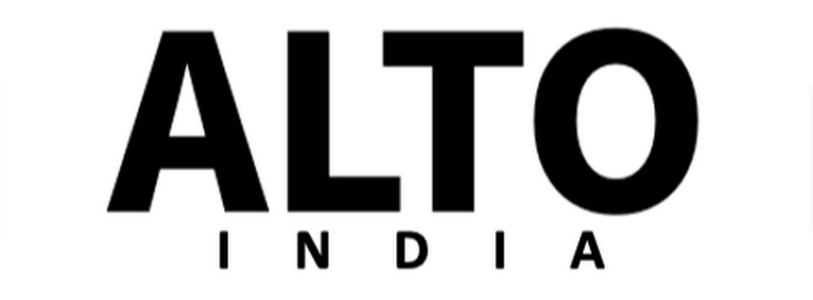Office lighting is one of the most critical aspects of a productive work environment. A well-lit office can improve productivity, reduce eye strain, and create a positive work atmosphere. Lighting can impact everything from mood and energy to health and safety, and it is essential to consider the right lighting solution for any workspace. In this article, we will discuss the importance of office lighting, common problems and solutions, and how to create the perfect office lighting plan.
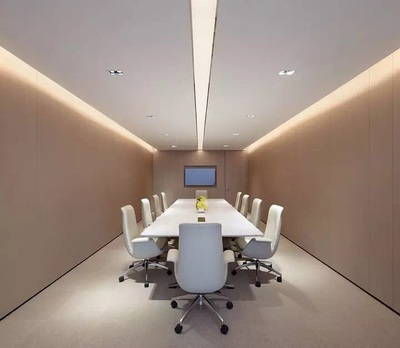
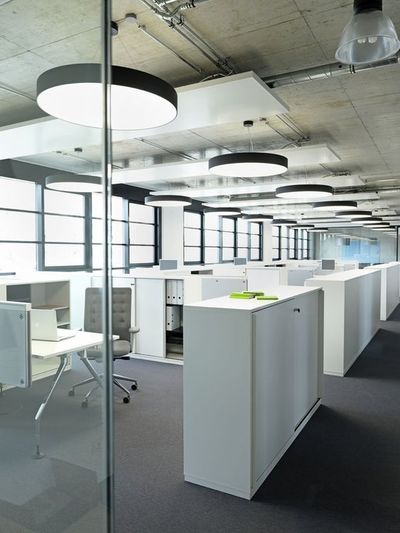
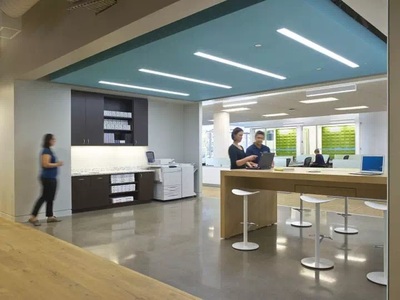
Importance of Office Lighting:
Good lighting in the office can help boost productivity, reduce fatigue, and enhance employee well-being. Poor lighting, on the other hand, can lead to headaches, eye strain, and even depression. Natural lighting is always the best option, but not every office has access to natural light. In such cases, artificial lighting is used, and it is essential to choose the right type of lighting.
Types of Office Lighting:
- General Lighting:
General lighting provides overall illumination and is usually achieved by installing overhead fixtures such as recessed lights or ceiling-mounted fixtures. This type of lighting is used to light up the entire room and is essential for tasks such as navigating around the office, cleaning, and maintenance.
- Task Lighting:
Task lighting is used to provide focused lighting for specific tasks such as reading, writing, or working on a computer. Desk lamps, floor lamps, and under-cabinet lights are common examples of task lighting. Task lighting can help reduce eye strain and improve productivity by creating a focused work environment.
- Accent Lighting:
Accent lighting is used to highlight specific areas of the office, such as artwork or architectural features. It can also be used to create a specific atmosphere or mood in the office.
- Natural Lighting:
Natural lighting is always the best option, as it is easy on the eyes and has been shown to boost productivity and well-being. However, not every office has access to natural light, so it is essential to choose the right type of artificial lighting.
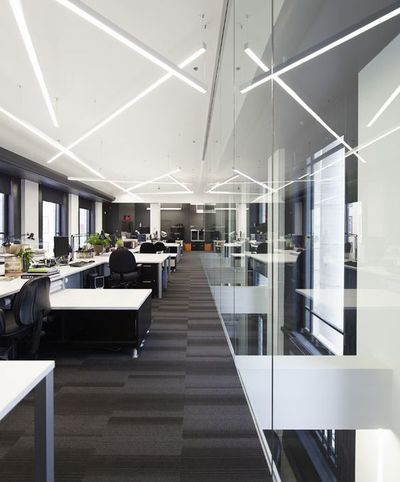
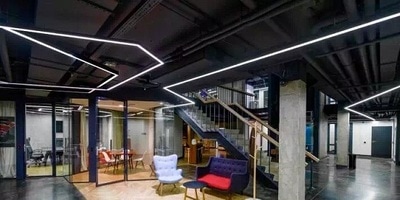
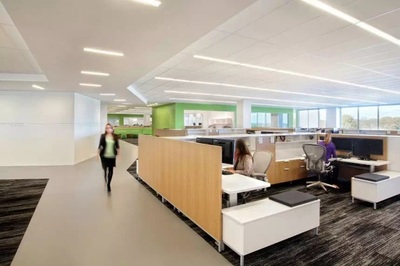
Common Problems with Office Lighting:
- Glare:
Glare occurs when there is too much contrast between the brightness of the light source and the surrounding environment. This can lead to eye strain, headaches, and reduced productivity. Glare can be reduced by using anti-glare screens on computers, using blinds or shades to control sunlight, and using diffused lighting instead of direct lighting.
- Flicker:
Flicker occurs when the light source is not steady, which can cause headaches and eye strain. Flicker can be reduced by using LED or fluorescent lights with a high-frequency ballast.
- Poor Color Rendering:
Poor color rendering can make it difficult to see details and can lead to eye strain. It is essential to choose light bulbs with a high color rendering index (CRI) to ensure that colors appear natural.
- Insufficient Lighting:
Insufficient lighting can lead to eye strain and reduce productivity. It is essential to have enough lighting in the office to ensure that all tasks can be completed safely and efficiently.
Solutions to Common Problems:
- Glare:
To reduce glare, it is essential to use diffused lighting instead of direct lighting. Blinds or shades can also be used to control sunlight, and anti-glare screens can be used on computers.
- Flicker:
To reduce flicker, it is essential to use LED or fluorescent lights with a high-frequency ballast. It is also important to ensure that the lights are properly installed and maintained.
- Poor Color Rendering:
To ensure good color rendering, it is essential to choose light bulbs with a high color rendering index (CRI). This will ensure that colors appear natural and that details can be seen clearly.
- Insufficient Lighting:
To ensure that there is enough lighting in the office, it is essential to perform a lighting audit
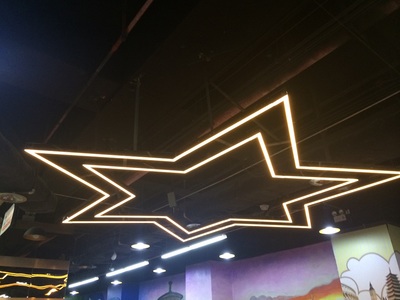
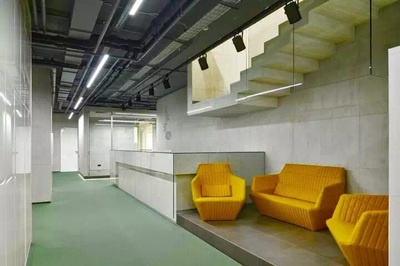
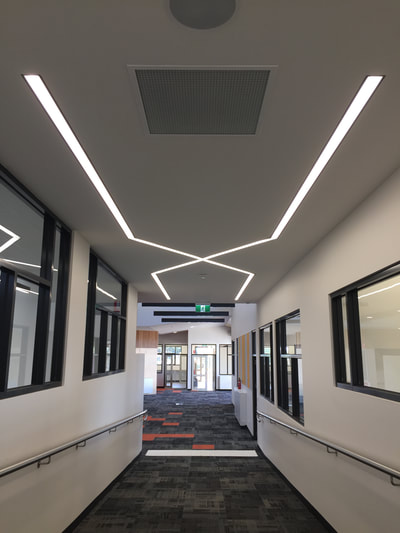
Office Lighting LED Technology & trends
Office lighting technology is constantly evolving to improve energy efficiency, employee well-being, and productivity. In recent years, there have been several new technologies introduced in office lighting solutions that have revolutionized the industry. In this article, we will discuss some of the latest technologies in office lighting solutions.
- LED Lighting:
LED lighting is one of the most energy-efficient lighting solutions available. LED lights use up to 80% less energy than traditional incandescent bulbs and last up to 25 times longer. LED lighting is also more flexible in terms of color temperature and brightness, making it easier to create the perfect lighting environment for any workspace.
- Smart Lighting:
Smart lighting systems use sensors and automation to control lighting based on occupancy and ambient lighting conditions. These systems can help reduce energy consumption by automatically turning off lights when they are not needed. They can also adjust lighting levels based on the time of day and natural light levels.
- Tunable Lighting:
Tunable lighting allows the color temperature of light to be adjusted to suit different activities and times of day. This technology has been shown to improve employee well-being and productivity by providing lighting that mimics natural light levels. Tunable lighting can also be used to create a specific atmosphere or mood in the office.
- Human-Centric Lighting:
Human-centric lighting is a type of tunable lighting that is designed to mimic natural light levels to support the body’s circadian rhythm. This technology has been shown to improve employee well-being and productivity by promoting better sleep patterns and reducing the risk of depression.
- Li-Fi:
Li-Fi is a new technology that uses visible light to transmit data, providing a high-speed wireless network without the need for radio frequencies. Li-Fi can be used in conjunction with LED lighting to provide both lighting and data transmission, making it ideal for smart office applications.
- Induction Lighting:
Induction lighting uses electromagnetic induction to create light without the use of electrodes or filaments. This technology is highly energy-efficient and has a long lifespan. Induction lighting is ideal for high-ceiling spaces where changing bulbs can be difficult.
- OLED Lighting:
OLED (organic light-emitting diode) lighting is a type of lighting that uses thin layers of organic material to produce light. OLED lighting is highly energy-efficient and has a very low profile, making it ideal for use in thin, flexible lighting panels. OLED lighting is also very durable and has a long lifespan.
The new technologies in office lighting solutions are designed to improve energy efficiency, employee well-being, and productivity. LED lighting, smart lighting, tunable lighting, human-centric lighting, Li-Fi, induction lighting, and OLED lighting are some of the latest technologies that are revolutionizing the industry. When choosing an office lighting solution, it is essential to consider factors such as energy efficiency, color temperature, and brightness levels to create a comfortable and productive workspace. By choosing the right lighting solution, businesses can improve employee well-being, reduce energy consumption, and increase productivity.
s. For example, bright light levels can be used to increase focus and productivity during tasks that require high levels of concentration. Lighting controls can also be used to create a stimulating environment for brainstorming sessions or creativity workshops.
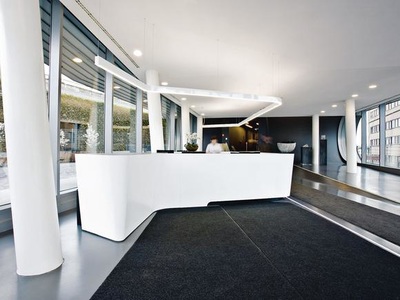
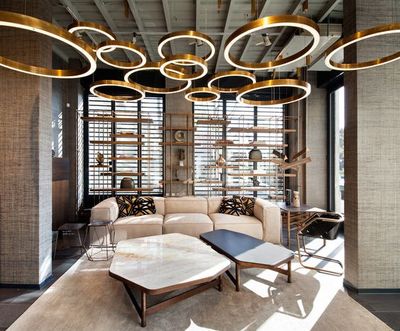
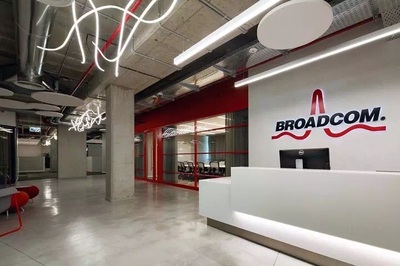
Lighting Controls for use in Office lighting
Lighting controls are an essential component of sustainable office lighting. By reducing energy consumption, lighting controls can help businesses meet their sustainability goals and reduce their carbon footprint. They can also contribute to certification programs, such as LEED or WELL, which require sustainable lighting solutions.
Lighting controls play a crucial role in office lighting by providing flexibility, energy savings, and creating a comfortable and productive workspace. Lighting controls can be used to adjust light levels, color temperature, and automate lighting based on occupancy and natural light levels. In this article, we will discuss the role of lighting controls in office lighting and their benefits.
- Energy Savings:
One of the most significant benefits of lighting controls in office lighting is energy savings. Lighting controls can reduce energy consumption by turning off lights when they are not needed, adjusting lighting levels based on occupancy, and optimizing lighting levels for specific tasks. This results in significant energy savings and lower utility bills.
- Flexibility:
Lighting controls provide flexibility by allowing users to adjust light levels and color temperature to create a comfortable and productive workspace. Lighting controls can also be used to create specific lighting scenes for different tasks or times of day, such as dimming the lights during presentations or meetings.
- Comfort:
Lighting controls can enhance employee comfort by providing lighting that suits individual preferences and needs. By allowing employees to adjust light levels and color temperature, they can create a workspace that is comfortable and promotes productivity.
- Productivity:
Lighting controls can improve productivity by providing lighting that supports specific tasks and promotes alertness
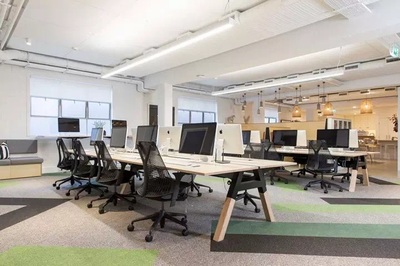
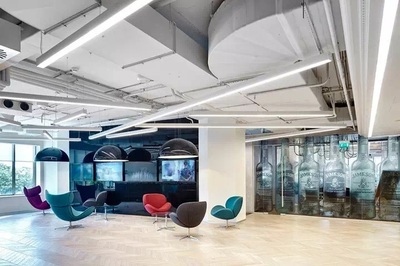
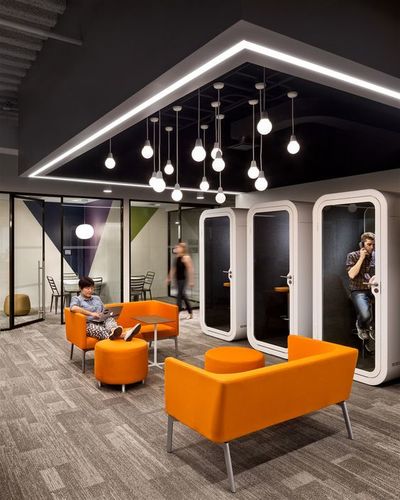
Types of Lighting Controls:
Dimmers allow users to adjust light levels by controlling the amount of electrical current that is sent to the light source. Dimmers are commonly used in offices to provide flexibility and create specific lighting scenes.
- Occupancy Sensors:
Occupancy sensors detect movement in a space and can be used to automate lighting based on occupancy. When no movement is detected, the sensor will turn off the lights to save energy.
- Daylight Sensors:
Daylight sensors detect natural light levels and can be used to adjust lighting levels accordingly. This can help reduce energy consumption by automatically dimming the lights when natural light levels are sufficient.
- Timers:
Timers can be used to automate lighting based on specific times of day or schedules. For example, lights can be turned off at the end of the workday or dimmed during lunch breaks.
Conclusion:
Lighting controls play a critical role in office lighting by providing flexibility, energy savings, and creating a comfortable and productive workspace. Dimmers, occupancy sensors, daylight sensors, and timers are some of the common types of lighting controls used in offices. By using lighting controls, businesses can reduce energy consumption, enhance employee comfort and productivity, and contribute to sustainability goals. When choosing lighting controls for an office, it is essential to consider the specific needs and tasks of the workspace to create an optimal lighting solution.
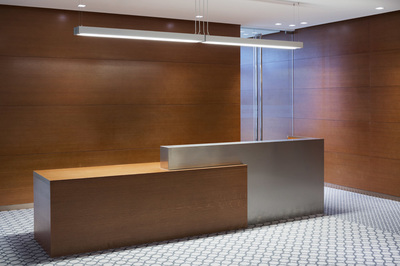
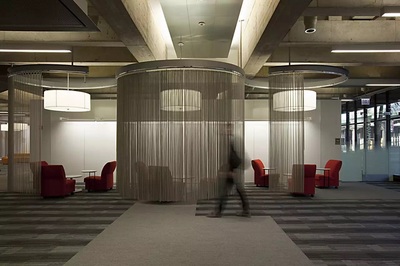
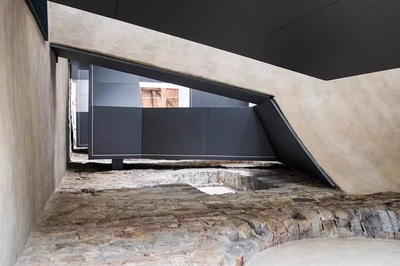
Fixture types for Office Lighting India
There are several types of light fixtures that can be used to light up offices. Each type of fixture has its own unique features and benefits, and the choice of fixture will depend on the specific needs of the space. In this article, we will discuss the most common types of fixtures used for office lighting.
- Recessed Fixtures:
Recessed fixtures, also known as can lights or downlights, are installed in the ceiling and provide ambient lighting for the entire room. They are ideal for open-plan offices and conference rooms where a broad, even light distribution is required. Recessed fixtures come in various sizes and shapes, and they can be equipped with different types of lamps, such as fluorescent, LED, or incandescent.
- Pendant Fixtures:
Pendant fixtures are suspended from the ceiling by a cord or chain and provide task lighting or accent lighting for specific areas. They are ideal for illuminating workstations, meeting areas, and reception areas. Pendant fixtures come in a wide range of styles and sizes, from sleek and modern to traditional and ornate.
- Wall Sconces:
Wall sconces are mounted on the wall and provide both ambient and accent lighting. They are ideal for illuminating hallways, corridors, and reception areas. Wall sconces come in a wide range of styles, from simple and modern to ornate and decorative.
- Track Lighting:
Track lighting consists of a linear track that is mounted on the ceiling or wall and individual light fixtures that can be moved and adjusted along the track. Track lighting is ideal for highlighting artwork, accenting architectural features, or providing task lighting for workstations. Track lighting fixtures come in various sizes and styles, and they can be equipped with different types of lamps, such as LED or halogen.
- Desk Lamps:
Desk lamps are small, portable fixtures that provide task lighting for individual workstations. They are ideal for illuminating computer screens, paperwork, and other tasks that require focused lighting. Desk lamps come in a wide range of styles, from traditional to modern, and they can be equipped with different types of lamps, such as LED or fluorescent.
- Under-Cabinet Lighting:
Under-cabinet lighting is installed under kitchen cabinets or office cabinets and provides task lighting for countertops or workstations. They are ideal for illuminating work areas and reducing shadows. Under-cabinet lighting fixtures come in various sizes and styles, and they can be equipped with different types of lamps, such as LED or fluorescent.
Choosing the right type of fixture for an office space is essential to create a functional and aesthetically pleasing lighting solution. Recessed fixtures, pendant fixtures, wall sconces, track lighting, desk lamps, and under-cabinet lighting are some of the most common types of fixtures used for office lighting. Each type of fixture has its own unique features and benefits, and the choice of fixture will depend on the specific needs of the space. When selecting fixtures for an office, it is essential to consider factors such as the size and layout of the space, the tasks performed in the space, and the desired aesthetic. By selecting the right fixtures, businesses can create a comfortable and productive workspace for employees.
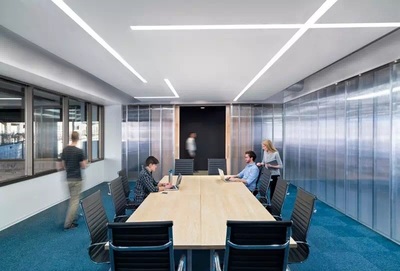
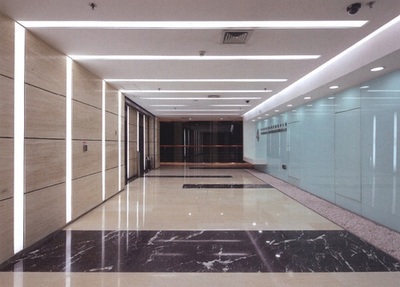
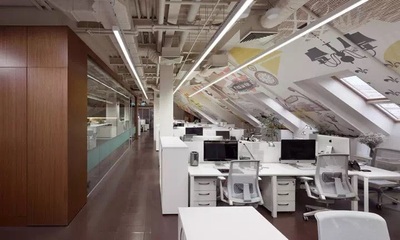
Equivalent Melanotic Lux (EML) – an office lighting design guide
Equivalent Melanotic Lux (EML) is a metric used to measure the biological effects of light on the human body. It takes into account the spectral composition of light and the sensitivity of the human eye to different wavelengths of light. EML is used to design lighting solutions that provide optimal lighting conditions for the human body, especially for maintaining the circadian rhythm.
In office lighting, EML design considerations are important for creating lighting solutions that support employee health, well-being, and productivity. Here are some key design considerations for office lighting with EML in mind:
- Light Spectrum:
The spectral composition of light plays a crucial role in setting the circadian rhythm. Blue light, in particular, has been shown to have a significant impact on the body’s circadian rhythm. Office lighting should include a balanced spectrum of light, with a higher proportion of blue light during the day and less blue light during the evening hours. This can be achieved by using LED fixtures with tunable white or RGBW technology, which allows for precise control of the light spectrum.
- Light Intensity:
The intensity of light is measured in lux, which is the amount of light falling on a surface. However, not all lux is equal when it comes to its impact on the human body. EML takes into account the sensitivity of the human eye to different wavelengths of light. Office lighting should be designed to provide the appropriate EML for different times of the day. For example, in the morning, a higher EML is needed to activate the body’s circadian rhythm and promote alertness, while in the evening, a lower EML is needed to promote relaxation and prepare the body for sleep.
- Lighting Control:
Lighting control is crucial for creating dynamic lighting solutions that adapt to the changing needs of the space and the occupants. The use of lighting control systems can help to adjust the light intensity and color temperature throughout the day, based on the occupants’ needs and the available daylight. Occupancy sensors, daylight sensors, and timers can be used to automate the lighting control system and ensure that the lighting is always optimal.
- Glare Control:
Glare is a common problem in office lighting, as it can cause eye strain and discomfort. To minimize glare, office lighting should be designed with indirect lighting, where the light is directed towards the ceiling or walls and reflected back into the space. Additionally, the use of diffusers and louvers can help to soften the light and reduce glare.
- Task Lighting:
Task lighting is essential for providing localized lighting for specific tasks, such as reading, writing, and computer work. Task lighting should be designed to provide the appropriate EML for the task at hand. For example, reading requires a higher EML than writing, as it requires greater visual acuity. Task lighting should be adjustable and dimmable to allow for precise control of the light intensity.
Conclusion:
Equivalent Melanotic Lux (EML) is a crucial metric for designing office lighting solutions that support the health, well-being, and productivity of employees. Design considerations such as light spectrum, light intensity, lighting control, glare control, and task lighting are essential for creating optimal lighting conditions for the human body. By designing lighting solutions with EML in mind, businesses can create a comfortable and productive workspace that supports employee health and well-being.

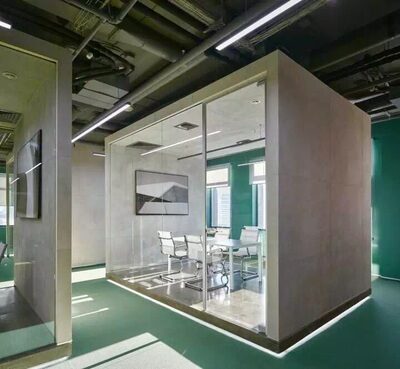
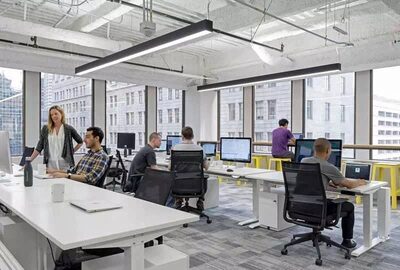
How to handle glare in office lighting
Glare is a common issue in office lighting that can cause eye strain and discomfort, leading to decreased productivity and discomfort for employees. Glare control is an essential design consideration for office lighting solutions to create a comfortable and productive workspace. Here are some methods for glare control in office lighting:
- Indirect Lighting:
Indirect lighting is a popular method of glare control in office lighting. In this method, the light is directed towards the ceiling or walls, and then it is reflected back into the space, creating a diffuse and even lighting effect. Indirect lighting helps to minimize glare by reducing the direct view of the light source.
- Diffusers:
Diffusers are an effective way of reducing glare in office lighting. Diffusers are placed over the light source to scatter the light and soften its intensity. Diffusers can be made of various materials, such as frosted glass or plastic, and can be used with both direct and indirect lighting systems.
- Louvers:
Louvers are another popular method of glare control in office lighting. Louvers are a series of angled blades that are placed over the light source. The blades redirect the light in a specific direction, reducing glare and improving the distribution of light. Louvers are commonly used with direct lighting systems.
- Lighting Layout:
The layout of the lighting fixtures is an essential design consideration for glare control in office lighting. The placement of the fixtures should be carefully planned to minimize direct light entering the eyes of the occupants. In addition, the spacing between fixtures should be optimized to create even lighting distribution and minimize shadows.
- Task Lighting:
Task lighting is an essential component of office lighting design and can also be used to control glare. Task lighting provides localized lighting for specific tasks, such as reading, writing, or computer work. By providing task lighting, the overall lighting level in the space can be reduced, reducing the likelihood of glare.
- Lighting Control:
Lighting control systems are an effective way of controlling glare in office lighting. Occupancy sensors and daylight sensors can be used to adjust the light levels in response to the amount of natural light entering the space. Additionally, dimming controls can be used to adjust the light intensity to the appropriate level for the task at hand.
In conclusion, glare control is an essential consideration in the design of office lighting solutions. Indirect lighting, diffusers, louvers, lighting layout, task lighting, and lighting control systems are all effective methods of reducing glare and creating a comfortable and productive workspace. By designing lighting solutions that minimize glare, businesses can create a more comfortable and productive workspace for their employees.
